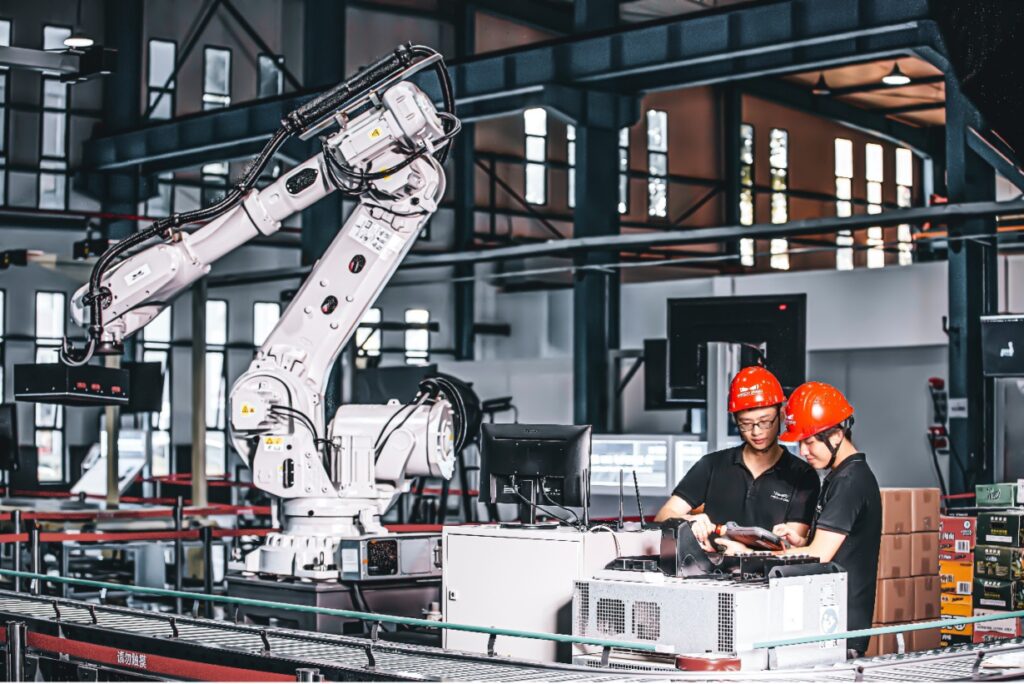Connect rapid prototyping and industrial manufacturing to take advantage of emerging technologies and cost-cutting processes. Contact HLH Rapid for a quote and more information.
Industrial manufacturing forms the backbone of modern markets and thriving economies. Also known as mass production or large-scale fabrication, industrial manufacturing involves multiple systematic processes to ensure excellence, efficiency, and compliance. It utilizes various methods and machinery to build infrastructure and produce high-volume orders with advanced technology.
Many fabricators use automation to develop designs and iterate specifications with minimal waste. The decision allows them to remain competitive and compatible while driving innovation and testing new concepts. Intuitive examples include rapid prototyping, 3D printing, and additive manufacturing. This article will examine how industrial manufacturing relates to RP and digital fabrication.
We will also discuss the importance of rapid prototyping in industrial manufacturing and explore the techniques, challenges, and applications. Let’s cut to the chase.
Table of Contents
What Is Industrial Manufacturing?
The Importance of Rapid Prototyping in Industrial Manufacturing
#1. Reduced Risk of Product Failure
#2. Enhanced Design Innovation
Rapid Prototyping Techniques in Industrial Manufacturing
Advantages and Limitations of Industrial Manufacturing Techniques
3D Printing (Additive Manufacturing)
Selective Laser Sintering (SLS) and Stereolithography (SLA)
Applications of Rapid Prototyping in Industrial Manufacturing
How Rapid Prototyping Fits into the Industrial Manufacturing Process
Four Advancements in Rapid Prototyping You Should Know
Industrial Manufacturing and Rapid Prototyping Trends to Track
What Is Industrial Manufacturing?
Understanding how rapid prototyping relates to industrial manufacturing means learning the definition of large-scale production. This essential service converts raw materials into finished items for various machinery and tools. Experts focus on making products for vital economic sectors such as automotive, aerospace, consumer electronics, food goods, and pharmaceuticals.
Industrial manufacturing encompasses several steps, from material procurement and project planning to component assessment and final assembly. Product design and engineering also involve troubleshooting technical specifications, structuring processes, scheduling runs, and overseeing product testing. Here is where rapid prototyping becomes critical.

We offer fast, high-quality, tailored PROTOTYPING solutions for leading companies in a wide range of industries.
superior Rapid PROTOTYPING
After machining and fabrication come quality control, which can absorb a vast portion of any manufacturing budget. Fortunately,
“Rapid prototyping technologies allow teams to streamline designs and catch flaws before mass production.”
This option helps companies move from early phases to distribution without wasting time or resources on unnecessary steps.
Teams can proactively use industrial manufacturing technologies and advanced fabrication techniques to create, assess, or enhance complex concepts. They often integrate computer-aided design (CAD), computer-aided manufacturing (CAM), digital imaging systems, 3D printers, and robotics to control outcomes and optimize details.
The Importance of Rapid Prototyping in Industrial Manufacturing
Industrial manufacturing aims to achieve excellent production efficiency, cost-effectiveness, and consistency with timely deliveries to in-demand markets. However, that is not possible with many traditional manufacturing methods. Competitive companies must consider rapid prototyping the standard for product design and mass production.
Here’s why:
- Quicker Design Iterations – Create physical prototypes rapidly to test, gather feedback, and modify.
- Reduce development Time – Shorten lead times to enable faster time-to-market for ready inventory.
- Decrease Manufacturing Costs – Identify concerns early to minimize errors and rectify problems before costly investments.
- Accurate Design Validations – Rapid prototyping provides a tangible representation of products for evaluation and approval.
- Efficient Product Optimization – Determine the most effective solutions while experimenting and refining.
Let’s explore three other advantages more closely.
#1. Reduced Risk of Product Failure
Rapid prototyping is essential in industrial manufacturing because it helps mitigate the risk of product failure. Teams can quickly produce digital and physical prototypes to detect issues and fix flaws during the initial design process or while experimenting. Through iterative design refinement and functional testing, RP lets teams uphold manufacturing standards while reducing hazards, costly mistakes, and waste.
FACT: Rapid prototyping for industrial manufacturing can help boost project profitability.
#2. Enhanced Design Innovation
Industrial manufacturers know that rapid prototyping can encourage design innovation and creative problem-solving. Product developers and engineers can push the boundaries of conventional fabrication with speedy yet precise manufacturing processes. This advantage helps teams implement unique features and integrate complex geometries for groundbreaking products.
FACT: RP means functional, user-friendly solutions driven by efficient technological advancements.
#3. Increased Usability
Industrial manufacturing leans on rapid prototyping to boost usability with realistic testing and evaluation of practical applications. RP for mass production also facilitates more meaningful improvements and helps reveal potential customization options. Iterative prototyping ensures a seamless transition from interface design to the final product.
FACT: Rapid prototyping helps teams develop and refine ergonomics for specific industries.
Rapid Prototyping Techniques in Industrial Manufacturing
Rapid prototyping technologies in industrial manufacturing encompass various processes that enable the quick and efficient creation of digital and physical models. Advanced techniques are crucial in accelerating product development, improving design validation, and enhancing productivity. Below are the standard RP methods in manufacturing for industrial purposes:
- 3D Printing
- Computer Numerical Control (CNC)
- Selective Laser Sintering (SLS)
- Stereolithography (SLA)
These rapid prototyping techniques for industrial manufacturing help expedite product development cycles and foster seamless collaboration with the cross-pollination of ideas.
“Physical prototypes are critical for functional testing, performance evaluations, and data analysis.”
RP fuels a cooperative environment that allows for the emergence of better questions and answers.
Advantages and Limitations of Industrial Manufacturing Techniques
Industrial manufacturing is not without sensible restrictions and limitations. Here is what you need to know about rapid prototyping on a large scale:
3D Printing (Additive Manufacturing)
Use sophisticated software to construct three-dimensional objects one layer at a time. Develop products from high-quality metals, plastics, or composite materials with intricate details and tailored elements.
Advantages
- Quick Iteration of Complicated Geometries
- Design Flexibility
- Fast Turnaround Times
Limitations
- Lower Tensile Strength
- Narrow Scalability
- Post-processing Requirements
Computer numerical control, or CNC, uses computer-aided design (CAD) technology to subtract materials from a workpiece using precise instructions. Use it for tight tolerances and excellent finishes.
Advantages
- Highly accurate outcomes
- Wide selection of machinable materials
- Suitable for prototyping and production
Limitations
- Extended Lead Times for Complex Designs
- Higher Tooling and Setup Costs
- Limited Compatibility with Intricate Internal Structures
Selective Laser Sintering (SLS) and Stereolithography (SLA)
Other additive manufacturing processes used for rapid prototyping in industrial manufacturing are SLS and SLA. Selective Laser Sintering (SLS) involves fusing powdered materials such as plastic or metal layer by layer. Conversely, stereolithography (SLA) uses a liquid resin that solidifies with UV laser exposure.
Advantages
- Exceptional Strength and Durability
- High-fidelity Finishes
- Suitable for Plastics, Metals, and Ceramics
Limitations
- Post-processing Requirements
- Higher equipment and Material Costs
- Decreased Production Speeds
It’s worth noting that the advantages and limitations can vary depending on several factors. Those factors include technologies, materials, industry standards, and consumer demand. Discuss the pros and cons with your team and contact an industrial manufacturing expert for more information.
Applications of Rapid Prototyping in Industrial Manufacturing
Rapid prototyping is used widely across multiple industries to enhance designs, improve product testing outcomes, share ideas, and comply with manufacturing regulations. Let’s look at some examples:
Vehicle designers use rapid prototyping to create physical models of different components with data analytics. This step helps teams evaluate form, fit, function, and fashion before introducing cars to the marketing.
Prototypes also allow engineers to test the performance of innovative auto parts, such as energy-efficient engines, durable suspension systems, and ergonomic interior features. RP is the cornerstone of customization and consumer appreciation.
Airplane engineers must validate new aircraft designs, evaluate aerodynamics, and assess complex system integrations. Rapid prototyping helps them do that efficiently. Physical models allow teams to create molds, tooling, and jigs for mass production.
Meanwhile, some RP processes render lightweight components with intricate features. This advantage helps reduce aircraft weight for increased safety and fuel efficiency.
Consumers demand high-quality products that function correctly and outlast traditional designs. Rapid prototyping bolsters product development by allowing teams to build and test ergonomics for enhanced user experience. This advantage encompasses smartphones, tablets, home appliances, and wearables.
RP in industrial manufacturing also lets designers personalize branded products such as containers, bespoke accessories, and innovative labels.
Patient-specific medical devices can help save lives, so rapid prototyping is a potentially life-saving technology in industrial manufacturing. Engineers can use RP technology to quickly produce prosthetics, implants, orthotics, and surgical instruments.
Industrial manufacturing for the medical industry also involves developing surgical planning guides, procedural simulations, and comprehensive training or education tools. RP enables teams to create specialized equipment, including diagnostic devices and laboratory gear.
Learn more about rapid prototyping for industrial manufacturing. Then take advantage of cost-cutting, timesaving, and material-conserving benefits.
How Rapid Prototyping Fits into the Industrial Manufacturing Process
RP integrates seamlessly into modern industrial manufacturing processes. It uses various automated tools to ensure precision while creating models ready for examination, testing, and mass production. Most teams utilize rapid prototyping techniques during the early stages.
Early implementation of RP technology and efficient manufacturing means swift evaluations and significant insights for immediate discussion. Rapid prototyping in industrial manufacturing provides ample room for file preparation and translation of design intent. Teams often achieve this with CAD for optimized data exchange and precision automation.
Four Advancements in Rapid Prototyping You Should Know
Rapid prototyping protocols advance as quickly as the innovations built by them.
“New developments in industrial manufacturing revolutionize product development within multiple landscapes.”
What does this mean for the future of manufacturing, and can teams get ahead of the curve? Here are four exciting advancements in RP and mass production you shouldn’t miss:
- High-Speed Manufacturing
- Multi-Medium Printing
- Continuous Liquid Interface Production (CLIP)
- Generative Design
High-speed manufacturers can use enhanced 3D printing technology to increase production speeds without sacrificing quality. They can also experiment with multiple materials and colors for custom designs, safe upgrades, tailored branding, and more. Three-dimensional printing now includes metal fabrication capabilities with tools to achieve intricate geometries.
Meanwhile, watch for CLIP advancements and integration. Continuous Liquid Interface Production combines 3D printing principles and best practices with UV-curable resins to produce custom designs and isotropic prototypes. These innovations foster generative design trends that leverage machine learning and artificial intelligence to optimize designs. Here is where rapid prototyping and industrial manufacturing ultimately merge.
These advancements in rapid prototyping are continually pushing the boundaries of what is possible in product development and manufacturing. They offer increased design freedom, faster production times, and expanded material options, enabling engineers and designers to bring their ideas to life more efficiently and effectively.
Industrial Manufacturing and Rapid Prototyping Trends to Track
Keep track of industrial manufacturing trends and rapid prototyping utilization to stay at the forefront of your market. Remain informed, be collaborative, and ask questions. Check out information and news about the following topics to lead the competition.
- Hybrid Manufacturing
- Additive manufacturing combined with traditional subtractive manufacturing.
- Digital Twin Simulation
- Rapid prototyping to create virtual replicas for evaluation and analysis.
- Robotics and Automation
- Time-saving systematic assembly lines to reduce human error and increase productivity.
- AI and ML
- Artificial intelligence and machine learning to make predictions for quality control.
- Circular Economics
- Sustainable manufacturing and rapid prototyping techniques for on-demand environmentally friendly practices.
- Industry 4.0
- Internet of Things (IoT) and cloud computing to optimize manufacturing processes.
- Bioprinting
- Tissue engineering of biological materials for research, development, and medicine.
The future of industrial manufacturing looks clean, concise, and complex, catered by automation, artificial intelligence, and augmented software. Manually-made products could become niche and expensive due to more efficient processes and enhanced capabilities. Get a quote to understand the investment and make the most of your money.
Understand the cost considerations of using rapid prototyping in industrial manufacturing. Learn about the technical and mechanical limitations of RP technologies. Then discuss supply challenges that could affect the cost.
Conclusion
Explore the benefits of rapid prototyping in industrial manufacturing processes to develop a comprehensive, money-saving plan. RP encourages interdisciplinary collaboration between product developers, engineers, and manufacturers. It helps break down barriers that prevent teams from innovating safely and within the necessary parameters.
Determine solutions that drive advancements in industrial manufacturing by integrating rapid prototyping, 3D printing, and automation. Embrace emerging technologies revolutionizing product design and distribution. Reach out to HLH Rapid to drive efficiency, decrease costs, and corner the competition.
 About the Author
About the Author
James Murphy is the founder and CEO of HLH Rapid – a hybrid CNC machine shop fusing Western service and quality with Eurasian industry influences for over 14 years. His advanced enterprise uncovers cost-effective rapid injection molding techniques to remain unmatched by industry competitors. Murphy’s full-service fabrication and manufacturing methods span six dedicated zones, from 3D printing and vacuum casting to sheet metal prototyping and project management. His expertise also includes high-efficiency machining within strict yet volatile markets.
Murphy earned an MBA after becoming inspired by his father’s hands-on craftsmanship. As a budding entrepreneur, he taught English and studied Chinese to pursue pioneering objectives. His groundbreaking approach helps build the future by providing well-rounded manufacturing services to innovative Western businesses. When he’s not offering upscale RP and CNC, James enjoys art-house movies, Thai boxing, and spending time with his growing family.
Visit HLHRapid.com for an instant quote on rapid prototyping services.


